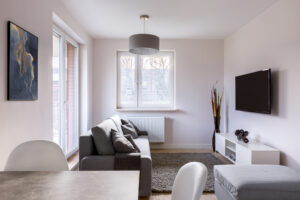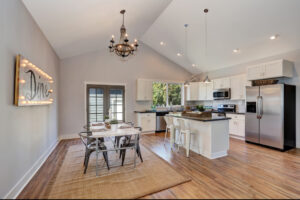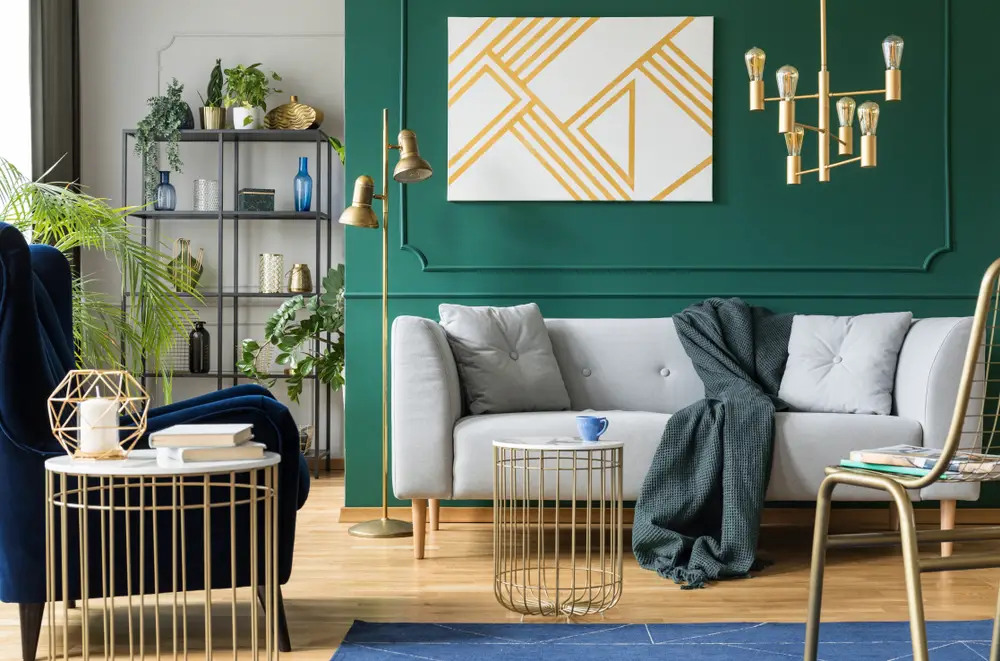
Adding an accent wall is a fantastic way to enhance the visual appeal of any room. Whether you are looking to create a focal point, add depth, or incorporate a pop of colour, accent walls can transform the overall look and feel of your space. In this article, I will provide you with valuable tips and insights on how to paint accent walls, helping you achieve the desired effect with ease.
When considering painting an accent wall, there are a few key factors to keep in mind. First and foremost, it’s important to choose the right wall for your accent. Look for walls that stand out or have unique architectural features. Avoid walls with asymmetrical shapes or slanted ceilings, as they may detract from the desired effect. Consider existing focal points, such as fireplaces or built-in bookcases, which can amplify the impact of your accent wall.
Next, think about the colour and design elements you want to incorporate. When selecting the colour for your accent wall, take into account the existing colour palette of the room. The accent wall should complement the other walls, furniture, and decor. Consider using the 60-30-10 rule, where the dominant colour covers 60% of the room, the secondary colour covers 30%, and the accent colour covers 10%. This will ensure a balanced and cohesive look.
Now, let’s dive into the step-by-step process of painting an accent wall. Before starting, make sure to prepare the room by moving furniture and decorations away from the wall. Clean the wall surface thoroughly and fill in any holes or imperfections. Protect adjacent surfaces with painter’s tape.
Choose high-quality paint in your desired colour. Use a brush for corners and edges, and a roller for the rest of the wall. Apply the paint evenly and allow it to dry fully before removing the painter’s tape. Finally, rearrange your furniture and decorations to showcase your newly painted accent wall.
Key Takeaways:
- Choosing the right wall is crucial for painting accent walls.
- Consider the existing color palette of the room when selecting the accent color.
- Follow the 60-30-10 rule to create a balanced color scheme.
- Prepare the room before painting by moving furniture and protecting adjacent surfaces.
- Apply the paint evenly and allow it to dry fully for a professional finish.
By following these tips and guidelines, you can confidently paint accent walls and achieve stunning results. Remember to have fun and unleash your creativity as you transform your space with a beautiful accent wall.
Choosing the Right Wall for an Accent Wall
To choose the right wall for an accent wall, I step back and assess the entire room. I look for walls that grab my attention or have existing focal points like fireplaces, brick walls, or built-in bookcases. I avoid walls with asymmetrical shapes or slanted ceilings. I am mindful of windows, as a dark accent colour around them can create a bright light effect. I consider the overall symmetry and balance of the room before making a decision. I remember that even neutral colours can create a dramatic effect on an accent wall.
Assessing Focal Points and Architectural Features
When choosing an accent wall, it’s important to identify areas that naturally draw attention. Look for walls that have unique architectural features or existing focal points. These could be features like a fireplace, exposed brick, or built-in bookcases. By selecting a wall that already has visual interest, the accent wall will enhance these elements and create a stunning focal point within the room.
Avoiding Asymmetry and Slanted Ceilings
Walls with asymmetrical shapes or slanted ceilings can create visual imbalance within a room. It’s best to choose a wall that has a relatively uniform shape and is not affected by unusual angles. This will ensure that the accent wall appears intentional and doesn’t distract from the overall aesthetic of the space.
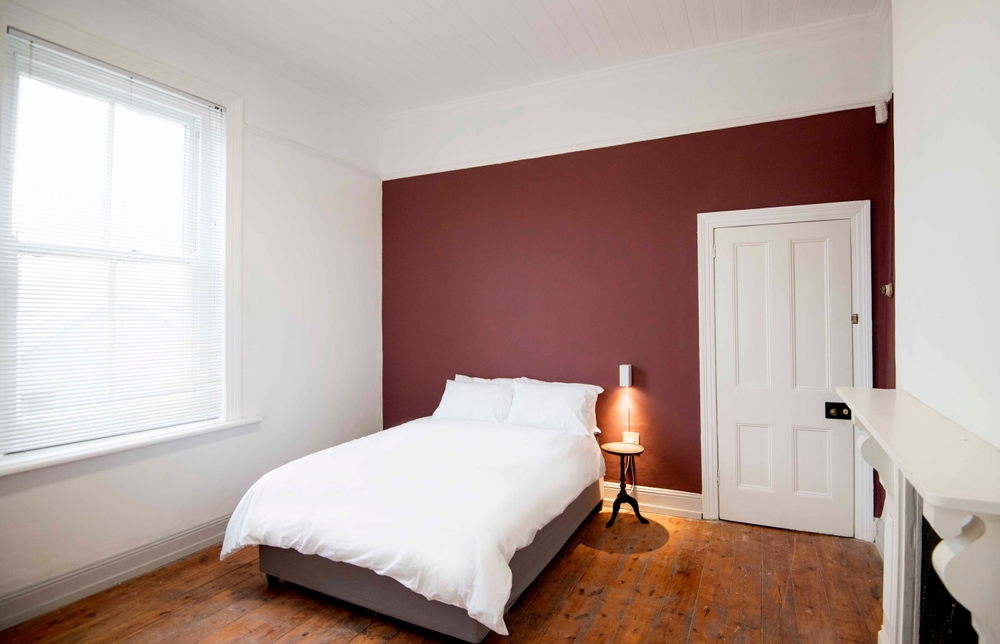
Considering the Effect of Windows
Windows play a significant role in the overall lighting of a room. When selecting an accent wall, it’s essential to consider how the colour will interact with the natural light coming through the windows. Dark accent colours around windows can create a striking contrast and draw attention to the view outside. However, it’s important to strike a balance between natural light and the chosen accent colour to avoid overpowering the room.
Creating Symmetry and Balance
Before finalizing the choice of an accent wall, it’s crucial to consider the overall symmetry and balance of the room. Ensure that the accent wall complements the existing colour scheme and decor. It should harmoniously blend with the surrounding walls and other elements within the space. Remember, even a neutral colour can make a statement as an accent wall and create a sense of balance and visual interest.
Colour and Design Considerations for Accent Walls
When it comes to accent walls, colour is key. The right hue can instantly transform a room, adding depth and visual interest. As you consider accent wall colours, it’s important to keep in mind the existing colour palette of the room. By taking into account the dominant, secondary, and accent colours, you can achieve a harmonious and cohesive look.
Most accent walls look best when they adjoin walls in a light to medium shade. This creates a striking contrast without overwhelming the space. Consider using the 60-30-10 rule to guide your colour coordination. The dominant colour should cover approximately 60% of the room, while the secondary color takes up 30%. The accent colour, which will be used on the accent wall, should make up the remaining 10%. This rule ensures a balanced and visually appealing colour scheme.
While it can be tempting to choose a trendy colour for your accent wall, it’s important to consider how it will coordinate with the room’s overall design and existing furniture. Remember, trends come and go, but a well-designed accent wall can stand the test of time. Instead of focusing solely on trends, aim for a colour that complements the room’s decoration and furniture.
When selecting an accent wall colour, keep in mind that the accent wall should support the existing focal points in the room. It should enhance the overall design rather than compete for attention. Consider the architectural features, such as a fireplace or a unique textured wall, and choose a colour that highlights these elements.
| Existing Wall Colour | Dominant Colour | Secondary Colour | Accent Colour |
|---|---|---|---|
| Light Neutral | Pale Blue-Green | Soft Gray | Deep Teal |
| Warm Beige | Creamy White | Golden Yellow | Rich Burgundy |
| Cool Gray | Light Lavender | Muted Green | Indigo Blue |
Remember, this is just a guide, and you can use it as a starting point to find the perfect accent wall colour for your space. Trust your intuition and experiment with different shades and tones to create a unique focal point that reflects your personal style.
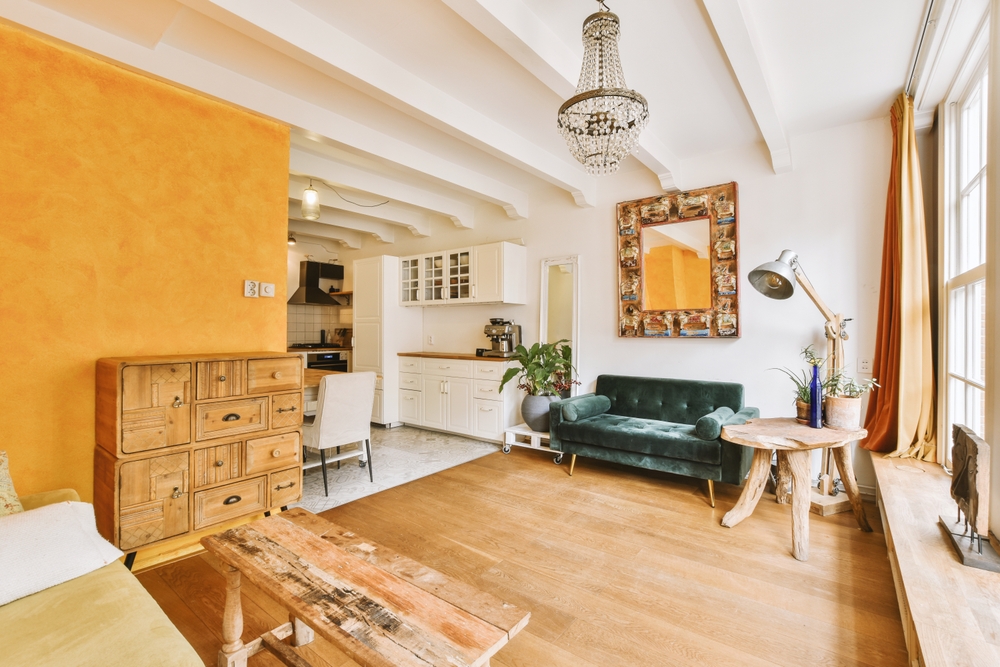
Step-by-Step Guide to Painting an Accent Wall
Painting an accent wall can be a fun and rewarding DIY project that can transform the look of a room. Alternatively, you can hire a professional to ensure a flawless finish. Whether you choose to tackle it yourself or enlist the help of an expert, I will guide you through the steps to paint an accent wall. Let’s get started!
- Choose the location and design: Before you begin painting, decide on the location of your accent wall and determine the scope of your design. Consider which wall in the room you want to highlight and whether you want to create a bold or subtle accent.
- Prepare the room: To ensure a smooth painting process, remove furniture and decorations from the wall and clear the space. Clean the wall surface to remove any dirt or dust that could affect the paint’s adhesion.
- Repair imperfections: Inspect the wall for any holes, dents, or imperfections. Fill them in with a spackling compound or a suitable filler, and then sand the patched areas until they are smooth.
- Apply painter’s tape: Use painter’s tape to protect adjacent surfaces, such as trim, windows, and ceilings, from accidental paint splatters. Ensure that the tape is applied securely to prevent any paint bleeding.
- Choose the right paint: Select a high-quality paint that is suitable for your accent wall. Consider factors such as the room’s lighting, desired finish (matte, satin, or glossy), and the type of surface you will be painting.
- Start painting: Begin by using a brush to cut in around the edges and corners of the wall. Then, use a roller to paint the rest of the wall in smooth, even strokes. Apply multiple coats if necessary, allowing each coat to dry completely before proceeding.
- Remove painter’s tape: Once the final coat of paint is dry, carefully remove the painter’s tape at a 45-degree angle. This will help create clean, sharp lines.
- Reassemble the room: Put the room back together by rearranging furniture and adding back decorations. Step back and enjoy your newly painted accent wall!
Painting an accent wall can instantly elevate the style and mood of a room. Whether you choose to take on the project yourself or hire a professional, following these steps will help you achieve a stunning result. So grab your paintbrush and let your creativity shine!
Conclusion
Adding an accent wall is a fantastic way to elevate the look of any room. By following the tips and guidelines provided in this article, you can confidently choose the perfect wall, colour, and design for your accent wall. Whether you decide to take on the challenge of painting the accent wall yourself or entrust the task to a professional, the end result will undoubtedly enhance the overall aesthetic of your space.
Experimenting with different colours, textures, and patterns will allow you to personalize your accent wall and create a unique focal point that draws the eye. Remember, the key is to complement the existing color scheme and decor of the room, rather than overpowering it.
FAQ
Why should I paint an accent wall?
Adding an accent wall is a popular way to add visual interest to a room and create a focal point.
Where can I create an accent wall?
Accent walls can be created in various areas of the home, including living rooms, bedrooms, bathrooms, kitchens, and even exteriors.
How do I choose the right wall for an accent wall?
Look for walls that grab your attention or have existing focal points like fireplaces or brick walls. Avoid walls with asymmetrical shapes or slanted ceilings.
What should I consider when choosing the color for an accent wall?
Consider the existing color palette of the room and use the 60-30-10 rule to determine the dominant, secondary, and accent colors. Ensure the accent wall color complements the room’s decoration and furniture.
How do I paint an accent wall?
Prepare the room by moving furniture and decorations away from the wall, clean the wall surface, fill in any holes or imperfections, apply painter’s tape to protect adjacent surfaces, choose a high-quality paint, and apply it using a brush for corners and a roller for the rest of the wall. Allow the paint to dry fully before removing the painter’s tape.
- Drill Battery Maintenance: Essential Tips for Cordless Drill Battery Care - February 5, 2024
- Troubleshooting Drill Issues - February 5, 2024
- Quick Drilling Techniques - February 2, 2024

